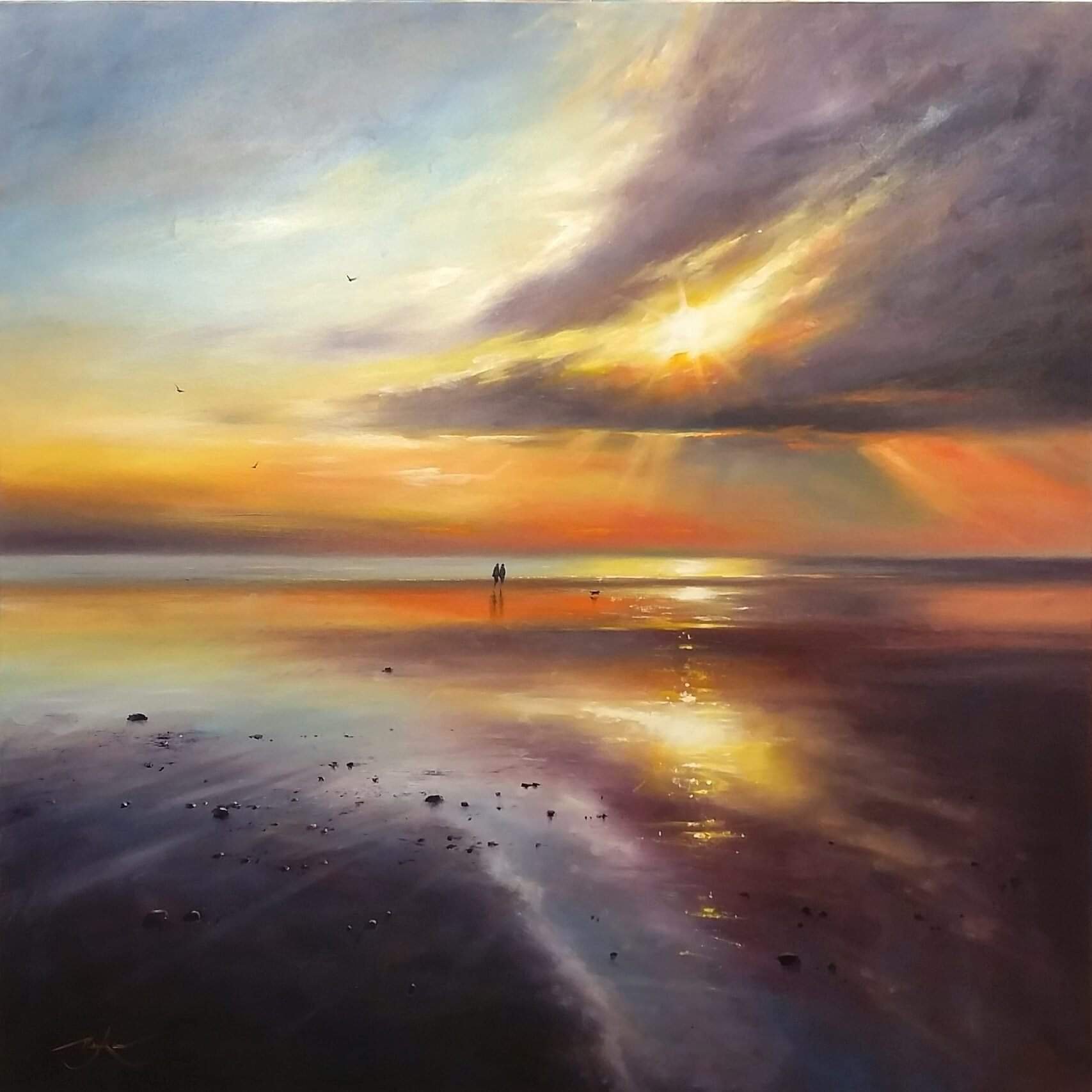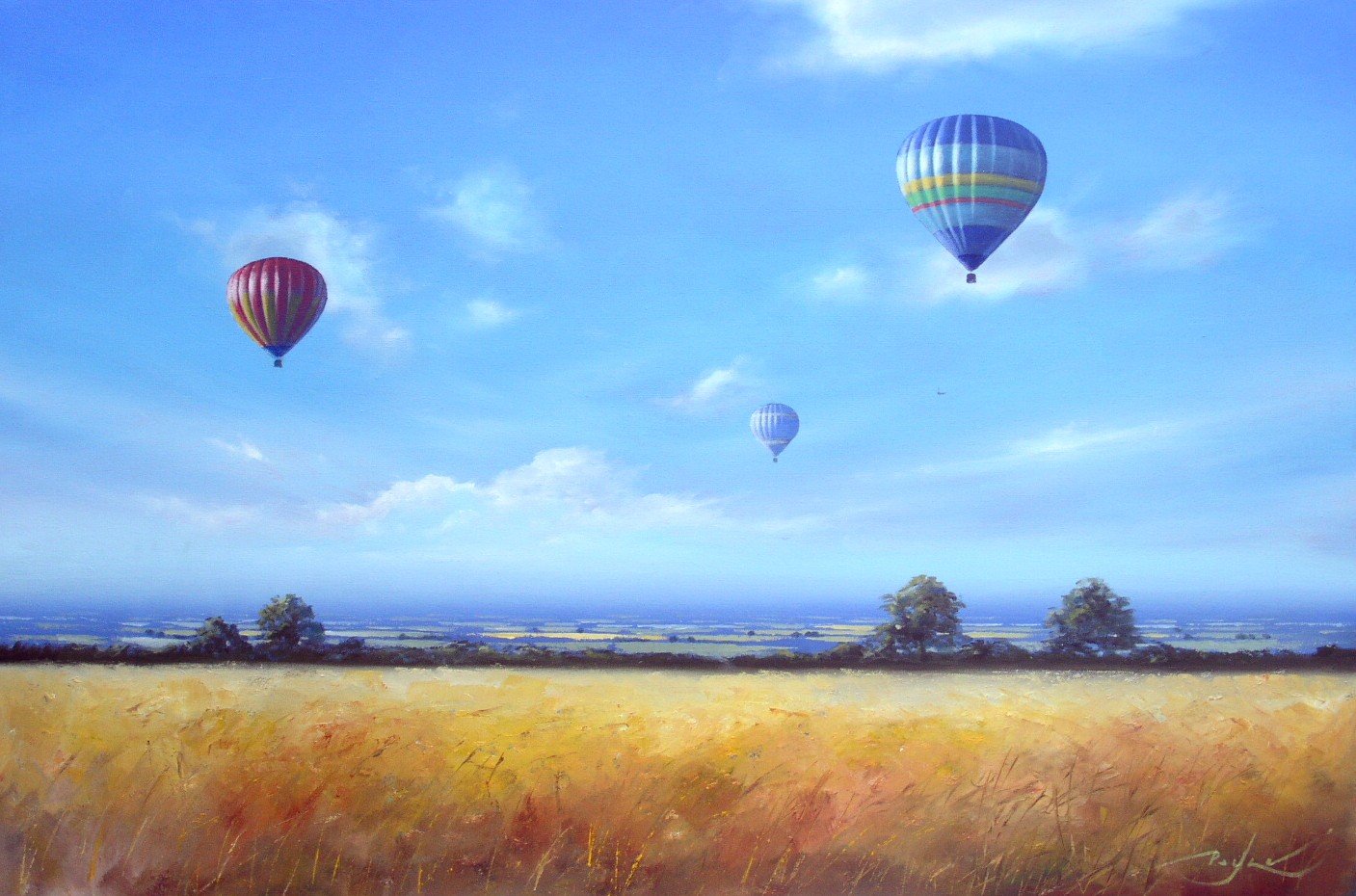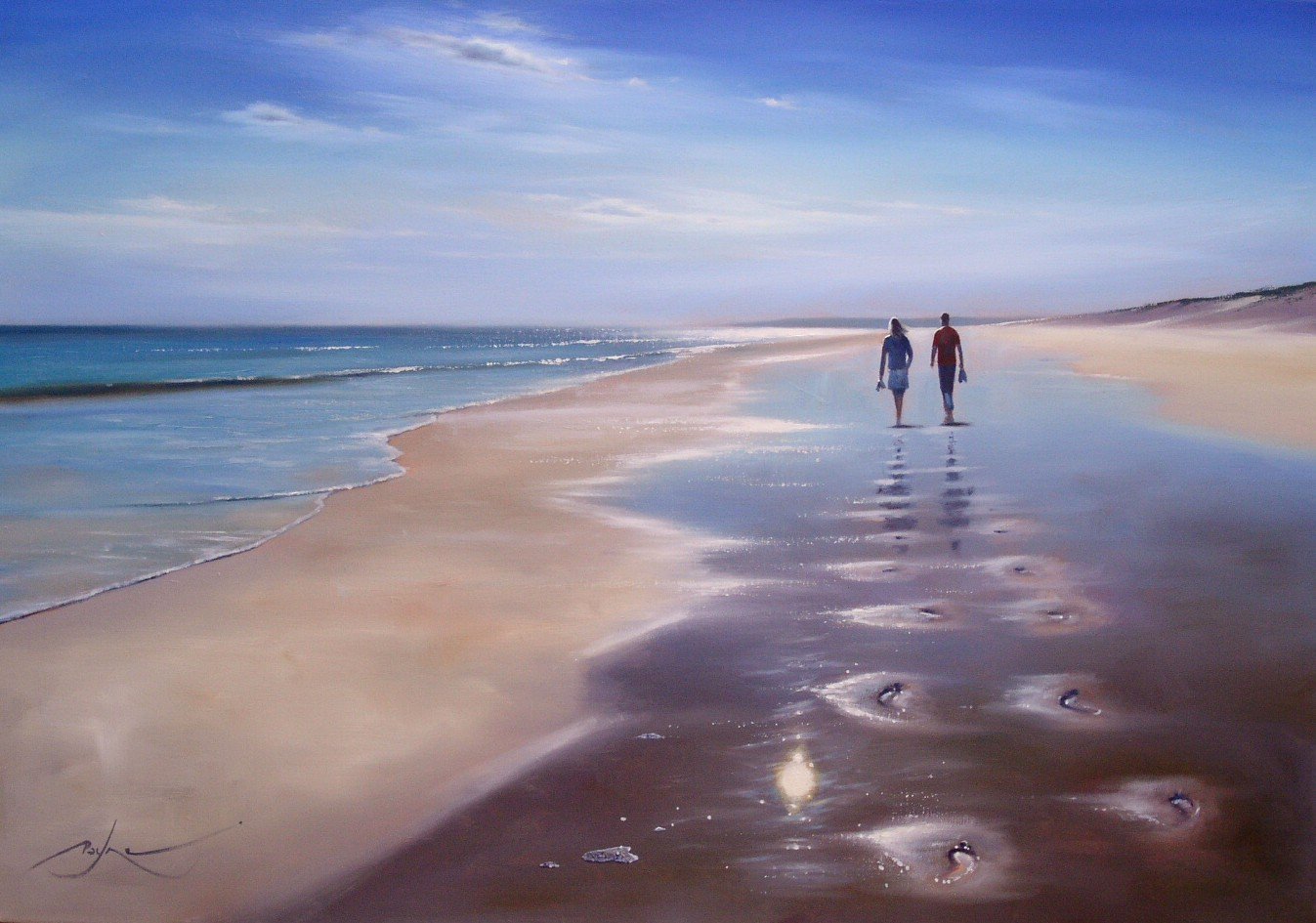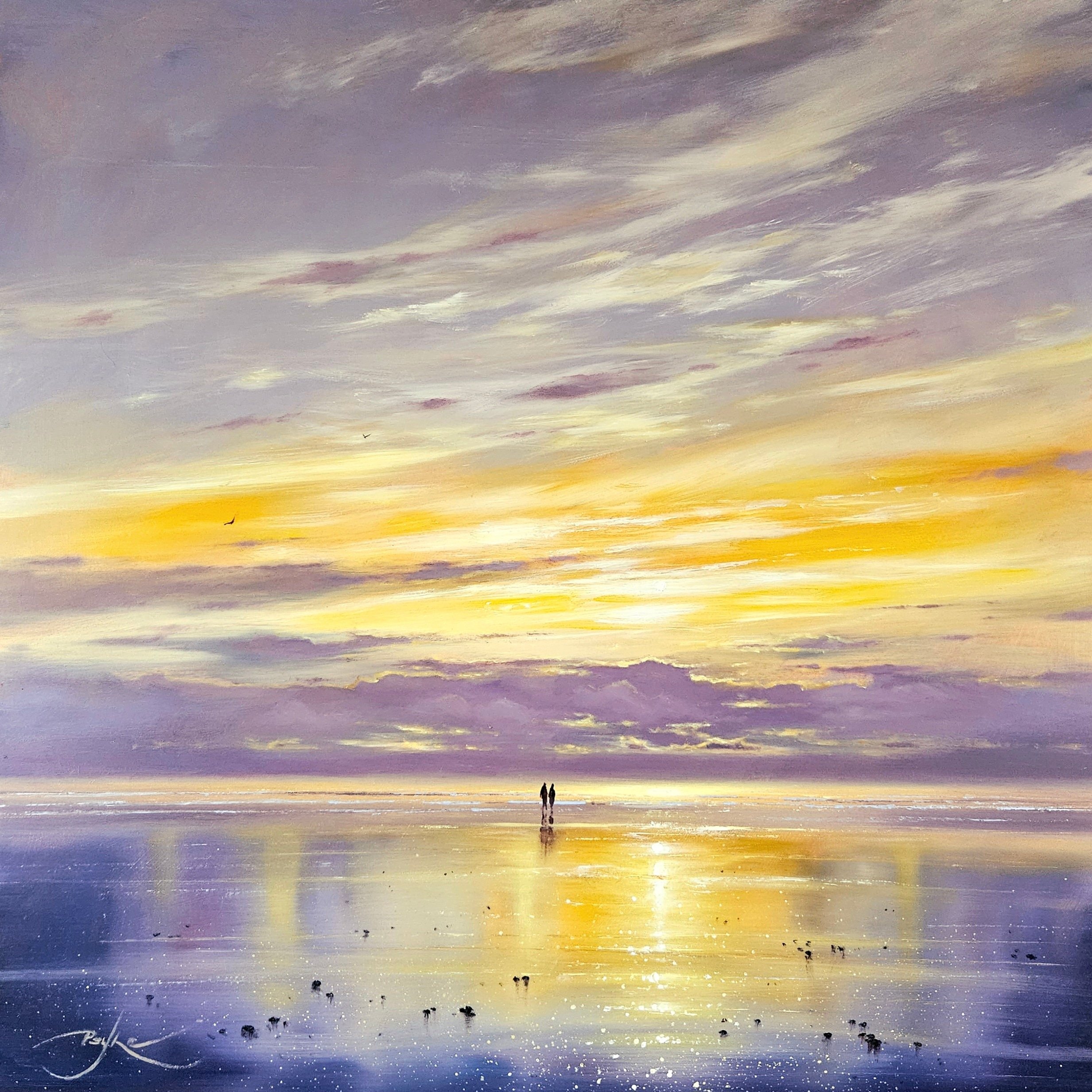ARTIST INTERVIEW: Ben Payne
Please can you tell me about yourself
I've been painting full-time for twenty years now. Before then, I had previously worked as a behavioural therapist in the field of Autism, and loved the work, but I knew I had to paint. I never dreamed I'd still be doing it as a career twenty years later. I'm largely self-taught, but my late mum was a skilled artist and she taught me alot about observation and draftsmanship. I've been lucky to work with some of the same galleries for much of my career and have had great support from longstanding customers.
What inspired you to paint? What is it about landscape painting that interests you?
The first artwork I ever approached galleries with was inspired by the UK coastline; I was always drawn to the sea and while I enjoyed the different challenge of landscape painting, standing on a beach was the ultimate escapism - so my paintings naturally developed from there.
Do your surroundings influence your art?
Very much so. I have been lucky to live in a beautiful part of the country for the last twenty years, surrounded by green fields and open space. But my affinity with the sea has recently pulled me away. I'm just about to move down to the south coast, where I'm hoping I'll find fresh inspiration for my newest work.
Describe your creative process; from start to finish of a painting. Where do you find your inspiration?
I start with the light. It's the first thing I place in my compositions. Then it's all about positioning the rest of the picture around that light source - whether it's directly looking into the sun or reflected light from outside the scene. I then build up the tones, from light to dark and then add the colour. I want the person looking at the picture to feel they're warmed by the scene and can escape into it. So, lines of perspective also play a big part in my compositions, pulling the viewer in.
What is your favourite piece of work you have created and why?
I've literally produced thousands of paintings. But there is one that still stands out, and it's a picture that has inspired me recently to go back to bigger scale canvases. It was a large skyscape I painted for the first gallery I worked with; Forest Gallery in Guildford, Surrey, about 18 years ago. It was of a big, billowing cloud formation, above a row of beach huts - a big 48"×36" canvas. Anyway, it got such a brilliant reaction and sold within an hour of delivery. It changed the scale of what I did and how I approached bigger compositions.
How would you describe your style?
I would say I paint with imagined realism. I enjoy applying a touch of artists' licence to the scenes I create, but they're nearly always based on an escapist ideal.
Who is your favourite artist and why? Do they have an influence on your work?
Probably Turner. I remember seeing his original paintings in The National Gallery in London (and elsewhere), and was instantly hooked by his use of light and atmosphere. He created so much radiance with the colours and tones he used. I love the fact that he challenged his peers with his own techniques and was regarded by some as a maverick. That appeals to me as much as his art.
How has your work changed since you first started out as an artist?
I've tried to loosen up a little and let the paint do the work, rather than tighten things up too much. I remember my art teacher at school encouraging me to resist the temptation to be too literal. And it's something I still try to remember. I've experimented a great deal with different ideas over the years, but have always returned to my skies and landscape work.
Please tell me about your achievements as an artist so far and also the challenges that you have faced
As a largely self-taught artist, I found I had to learn from experience. I loved getting feedback from my first galleries - however brutal or honest! It gave me something to work on. I'm still to this day completely focused on being as good as I can. I'm not there yet. A few years ago I set myself the challenge of painting a thousand small pieces to steadily improve my technique and style . . . A hundred didn't seem enough! And when I reached that number I decided I wasn't quite getting it right enough of the time, so I painted another thousand. It took me ages, but I put each one up for auction online and sold every single one to buyers all over the world. It was an unintentional, almost accidental result of an experiment intended to simply improve my skill. At the last count, I have sent paintings and small practice studies to people in 22 countries worldwide. So, I'm extremely humbled by the fact my work has reached so many people in so many places.
Why do you think art is important in society?
Art offers escapism. But it also offers commentary on the world around us. It records moments in time (both good and bad), it gives us reason to stop and take notice, it challenges and celebrates. It's an art form that anyone can be a part of. I'm a huge believer in it being a means of communication, no matter how technically inexperienced or unskilled you might be, that literally anyone can use. I dearly wish it was taken more seriously within the National Curriculum and given more support and funding. Because it is such an individual form of expression, rather than a generalised language of right or wrong. And, we need individuals in this world, far more than we need swathes of people all able to regurgitate the same facts.








